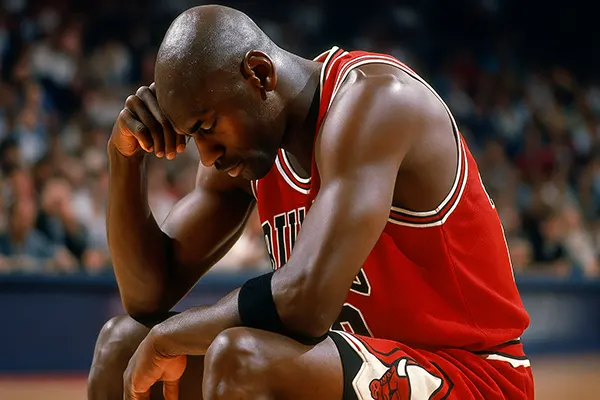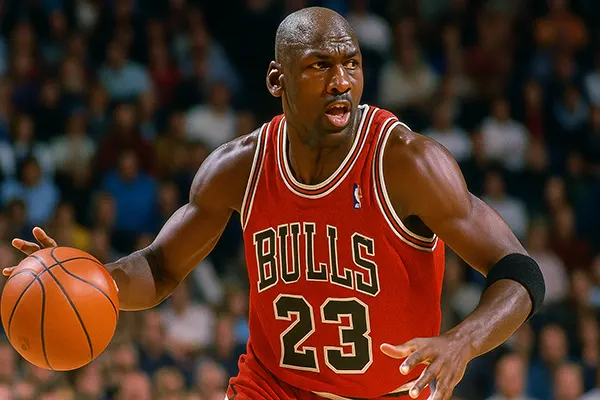
Michael Jordan and Mental Health in Sport: What Remained Hidden
Throughout the 1990s, Michael Jordan was not just a basketball icon—he was a global phenomenon. His fierce competitiveness and unrelenting drive brought him six NBA championships, two retirements, and a cultural legacy few athletes can match. But behind the trophies and endorsements, there existed a much less discussed reality: the immense psychological toll that came with greatness. Today, in the age of mental health awareness, revisiting Jordan’s story reveals an era when psychological struggles were often ignored or misunderstood.
The Unseen Struggles of a Legend
During the height of Jordan’s career in the early-to-mid 1990s, he was at the epicentre of intense public and media scrutiny. His father’s tragic murder in 1993, followed by his first abrupt retirement, shocked fans. At the time, his departure was often analysed through the lens of physical exhaustion or burnout. However, contemporary interviews and retrospective documentaries suggest a deeper cause: mounting emotional fatigue and unresolved grief.
The relentless demands of fame left Jordan with little time or space to process trauma. “The Last Dance” documentary offered a rare glimpse into his emotional vulnerability—moments where he broke down on camera, speaking about pressure and expectation. Yet, in the 1990s, the concept of openly discussing mental health in elite sport was nearly non-existent. It was a time when emotional resilience was equated with silence and perseverance.
Jordan’s competitive fire became both his weapon and his shield. His intense training regimen, mental preparation, and strict self-discipline became coping mechanisms in the absence of psychological support. While these attributes elevated his game, they also masked internal battles that went unnoticed and unaddressed.
Media Narratives and the Stigma of Mental Health
The sports media of the 1990s was fixated on performance and winning. Rarely did journalists explore or acknowledge an athlete’s mental well-being. Jordan was frequently portrayed as superhuman—a narrative that left no room for emotional complexity or mental strain. The cultural expectation was to endure quietly and win at all costs.
His gambling habits were scrutinised, yet few probed the possible psychological underpinnings—addiction, escapism, or the need to channel pressure into risk. The concept of athlete burnout was largely misunderstood. Instead, Jordan’s behaviour was viewed either as eccentric or part of his winning formula, reinforcing a limited understanding of what it meant to be mentally healthy in professional sports.
In today’s media climate, such issues are handled with far more sensitivity. There is now recognition that even the strongest athletes can struggle, and that acknowledging mental health is not a weakness, but a necessity for long-term well-being.
Changing Times: Modern Athletes and Mental Health
The contrast between Michael Jordan’s era and today is stark. In the last decade, mental health in sport has emerged as a serious and necessary topic. Athletes like Simone Biles and Kevin Love have become powerful voices in destigmatising psychological care. Their stories have helped reframe public understanding and reshaped institutional practices around athlete support.
Simone Biles’ withdrawal from the Tokyo Olympics in 2021 marked a cultural turning point. Her decision prioritised psychological safety over public expectation, signalling a new era of self-awareness and self-preservation in elite competition. Kevin Love’s public essay in “The Players’ Tribune” about his panic attacks and therapy journey was another milestone, bringing vulnerability to the forefront of sports discourse.
Unlike in Jordan’s time, athletes today have access to mental health professionals, wellness programmes, and open forums for discussion. This shift reflects both cultural growth and a recognition that sustained success depends on more than physical strength—it requires psychological stability.
New Norms and Support Systems
Modern sports teams increasingly employ mental health practitioners as integral members of support staff. Players are encouraged to seek counselling and share struggles, both in private and public spaces. Governing bodies, including the NBA and IOC, now actively promote psychological education and resilience training.
Moreover, social media has become a double-edged sword. While it subjects athletes to greater scrutiny, it also allows them to share their own narratives, bypassing traditional media filters. This autonomy has empowered athletes to speak candidly and challenge outdated norms around mental health.
Public reception has also evolved. Where once admission of struggle might have been interpreted as weakness, it is now often viewed as courageous and admirable. Society’s expectations have matured, embracing a more holistic view of athlete wellness.

The Double-Edged Sword of Greatness
Michael Jordan’s legacy is one of relentless excellence, but also of personal cost. His career illustrates how extreme discipline and hypermotivation can elevate an athlete beyond ordinary limits—but potentially at the expense of internal equilibrium. While he conquered the sport physically, emotionally he was often isolated, misunderstood, and burdened by pressure.
Retrospective analysis suggests that Jordan’s psyche was shaped not only by the desire to win but also by the fear of failure. This mindset, while effective competitively, is not without consequence. Psychologists today identify this as “maladaptive perfectionism”—a trait that can result in chronic stress, anxiety, and eventual burnout.
Jordan’s story is a case study in the psychological cost of hero worship. His experiences continue to influence how we assess success in sport—not just in terms of results, but in terms of personal health and balance. It raises crucial questions: What do we demand from our heroes? And what are they sacrificing to deliver it?
Legacy and Lessons for Future Generations
As mental health becomes a pillar of athletic performance, Jordan’s experience serves as both a cautionary tale and a catalyst for change. His journey underscores the need for comprehensive support systems that treat athletes as whole people, not just performers.
Future generations can learn from both his triumphs and his silences. Recognising signs of mental fatigue, encouraging peer support, and normalising therapy are steps that can make competitive environments safer and more sustainable.
In celebrating greatness, we must also honour the humanity behind it. Michael Jordan remains a towering figure—not just because he won, but because he did so despite the silent battles few could see. Today, we are finally ready to talk about them.
